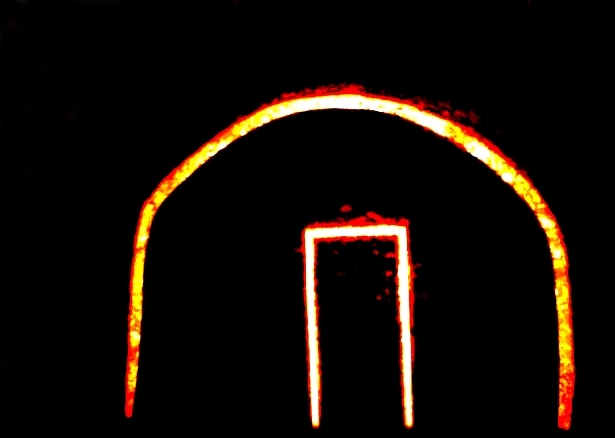PARATHEATRICAL EXPERIENCES (excerpts from)
by Carmelo Strano
Non-traditional theatrical typologies include performances, installations and a sort of continuous installation of a paratheatrical kind. Fabrizio Crisafulli has a lot of experience in all of these sectors. With his company, Il Pudore Bene in Vista (Well-exposed Decency), he reveals the gifts he has been endowed with: a light, subtle touch, a delicate, extremely refìned sensibility, great inventiveness and perceplive, enlighted insight.
These characteristics show the artist's affinity with another experienced performer, Bob Wilson, with his Einstein on the Beach, Civil Wars, Doctor Faustus and other works. The American director, too, has devetoped a paratheatrical form that I would call ‘continuous performance’.
(…..)
Crisafulli began his research in the mid eighties, at the Academy of Fine Arts in Catania (he now teaches at the Academy in Florence and lives in Rome). He began by experimenling - along with his students - with light, which has become his battleground. (…..) through the years he has honed his expressive means, becoming one of the most poetic, vanguard artists and directors, oflen in harmony with the Japanese world and the sense of the absolute that is extensively expressed by Mishima, as well as in Kawabala's world. Crisafulli disposes of custom-made, well-weighed alembics that fit into his hands just right; he handles them surely and decisively, and each time he concocts the righi potions to create dreams and lightness. He almost assumes the sense of japanese script, and each of his theatrical (or parathealrical) expressions witnesses his existence, in a ‘here and now’ that knows no boundaries.
(…..)
Nothing is necessary, but evetything that comes into action has great significance: everything can easily be substituted, but al that moment each element is unique, there is no other: it is neither an addition nor is it supeifluous. It is there, like a script, like a pure sign that expresses itself. This orientai dimension, which is far from fashions and trendy situations, will lead Crisafulli to deal with an artist who used to have a deep feeling of the absolute: Yves Klein. So, in 1997, one of Crisafulli's many works appeared, Folgore Lenta (Slow Lightning), which, in fact, he dedicated to the author of blue monochromes (IKB, International Klein Bleu). The director is well aware of some of the snares the problem of color presents: so he says: ‘Color is apowe1ful emotional and communicative element, but cannot precisely be identified with a language, despite countless attempts to ‘explain’ it and reduce it to a code. Here, too, we find the queslion of the absolute, which cannot be reduced to a language’ (…..). Yves Klein is part o/ Crisafulli's personal imagination, because the French artist expresses pure sensiblity (‘Sensibilily is the cornerstone of the universe’, he used to say).
Throughout the artist's training, his imagination was also influenced by Adolphe Appia and Gordon Craig (the two great founders of contemporaiy scenography). Bob Wilson goes without saying ... but Crisafulli adds Antonin Artaud and Carmelo Bene; the latter is a reference-point in line with ‘a medium of mysterious forces’. Bui it is clear that the director's familiarity with visual arts keeps him closer to recitation and totally steeped in visual results. When he was interviewed by Simonetta Lux in 2003, (…..) stated: ‘I consider my installations very close to the theater. Among other things, they have a secular development. I use sound within them. Often, they are 'actions', even though they are not carried out by people in flesh and blood. On the other hand. due to the various reasons I have specified, I see my theater as an expression of visual art’.
(Carmelo Strano, La "performance continua" / Paratheatrical Experiences, «L’Arca», 200, Milan, February 2005, pp. 78-81.
